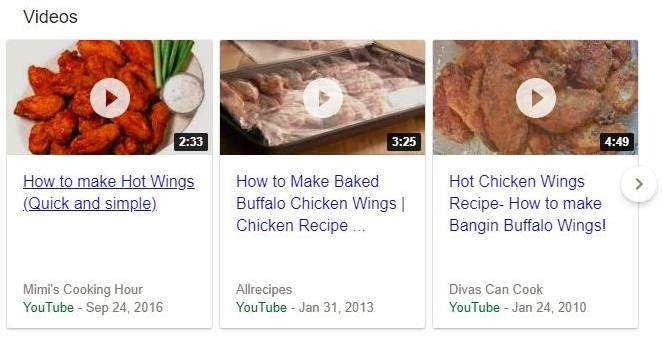Blogging is not what it was 10 years ago. Getting a blog post to rank in Google is becoming increasingly difficult. YouTube has changed a lot as well: Getting videos to rank on the platform is not as easy as it used to be.
However, what separates blog posts from videos is that consumers are now demanding videos. For the busy and short-attentioned, videos can get information across to searchers with less effort and in a more engaging way. Accordingly, for certain searches, quality videos are rising above quality blog posts in search results, especially on Google.
If you are blogging and merely hoping that your posts will rank, you are likely going to be disappointed: The game is changing. But creating videos can afford you an opportunity to rise above all the boring, anonymous, no-personality content out there.
Here is how you can start optimizing your YouTube videos for Google ranking.
Look at Google searches to see whether videos ran
Do a Google search to see which videos are ranking. If there are no videos ranking, then there is probably a good reason for that: Google believes videos aren't the best format to deliver results for that search.
Look at the top menu to see where the Video tab is positioned, the closer it is to the left, the more valuable video is for that specific search.
The placement of content types on the bar will give you insight on what content you should produce: If you want to rank on Google SERPs, you'll have to understand Google's preferences.
Next, you can use the Keywords Everywhere plugin to see which related keywords other people are searching for. Doing so will help you find the right keywords to use.
Create content that educates and entertains
The type of videos that Google deems high-value for searchers falls into the educational category:
- Tutorials
- How-to content
- Reviews
Structuring your videos in an educational format makes it easier for Google to recognize that your content is there to help the searcher.
After all, videos often do make much better how-to guides than long blog posts that viewers would have to read through. Google understands that, and it will rank your content higher if your video fulfills the promise of educating.
Optimize your video file name
The name of your video file should be the same as the title of your YouTube video. So after you upload the file into the platform, don't change the title. Putting the optimized name in the raw file gives YouTube and Google a better idea what the content is right away.
If you are already spending time optimizing the YouTube page, optimize the file name as well.
Take keywords from top competing videos
Do a search on YouTube to find the top videos you want to compete against. You want anyone who watches those videos to see yours as well, either instead of theirs or as Up Next or a Suggested Video. You can do that by taking their keywords and using it on our own video tags.
There is a free tool called VidIQ that will let you know all the tags a video is currently using. Go into your competitor's videos and pull that info to use on your own.
Note: Tags do not affect Google ranking.
Put the video in a playlist
Playlists are category pages that help add authority and relevance for your videos. Make sure your playlists are optimized with a high-search keyphrase and a quality description that includes keywords and helps Google identify what the video content is all about.
Adding a video into a playlist gives your other videos a greater chance of appearing on a Google SERP.
Promote your video
Sharing your video means more people will view and engage with it. If the viewers find the video useful, Google will recognize that and lift it up in the rankings.
Some good platforms on which to share educational videos are...
- Quora
- Google+ Communities
- Blogs (as embeds)
Build links to your video
If you have a website, you know how important it is to acquire backlinks.
Google treats your YouTube video as a webpage; and the more quality dofollow backlinks you have directing back to it, the more likely Google is to rank it—just as it would be more likely to rank your homepage or blog posts.
Focus on ranking on YouTube first
Even though ranking on Google may be your goal, start with ranking on YouTube. You are creating videos, after all, and YouTube is the second-largest search engine.
The more you understand about ranking on YouTube, the better your channel will perform. The better your channel performs, the more authority it will have. The more authority it has, the more Google Search will notice it.







